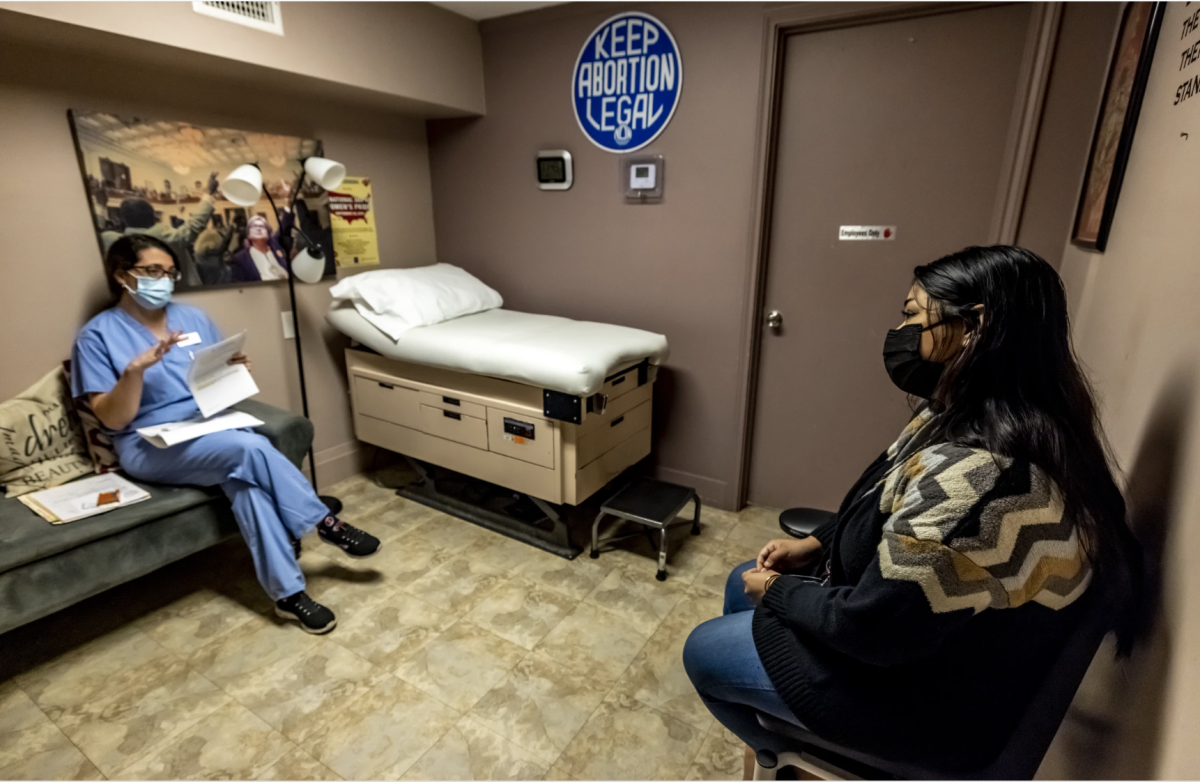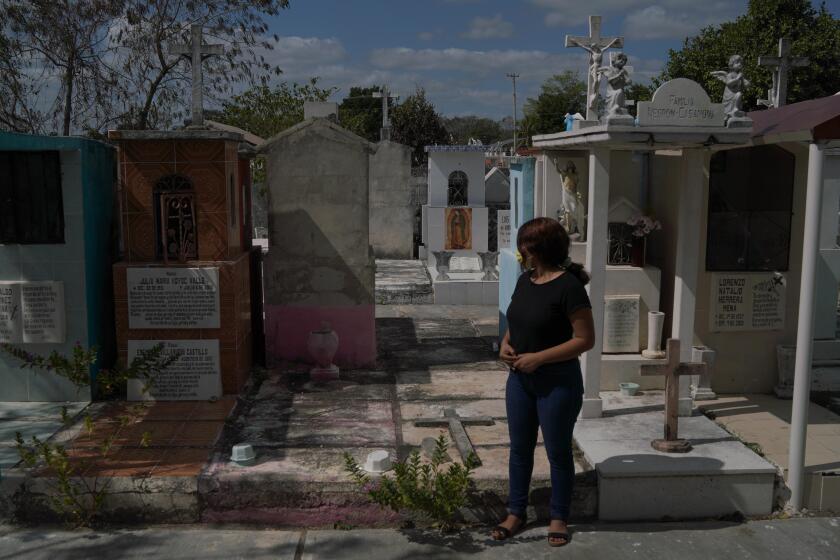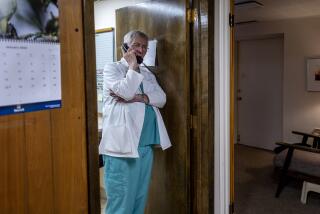Op-Ed: Abortion ban ‘exceptions’ cannot protect life

The Supreme Court’s decision to overturn Roe vs. Wade has already set into motion legal processes to criminalize abortion in at least 15 states, with immediate and catastrophic health consequences for pregnant people.
Antiabortion lawmakers argue that the “exceptions” written into many of these laws — most commonly permitting abortion to save the life of the pregnant person or to prevent a severe health risk — will keep women safe. In reality, these exceptions fail to ensure access to necessary medical care and the policies will ultimately increase pregnancy complications, illness and death.
This is not scaremongering. It’s the hard reality that I witnessed after 10 years of studying abortion law in El Salvador.
From Mexico to Argentina, prosecutors have relied on the ‘flotation test’ to convict women of killing their babies. But the test is often wrong.
Since its strict ban took effect in 1998, El Salvador has headlined global news for criminalizing all abortions without exception. As a result, when a pregnancy threatens a woman or girl’s health, physicians in Salvadoran public hospitals are instructed to “save both lives” — the mother’s and the fetus’.
Tragic attempts to preserve both lives under El Salvador’s abortion ban give a glimpse into what the U.S. can now expect. By overturning Roe, the Supreme Court opened the door for states to investigate and prosecute doctors who interrupt pregnancies, even in situations where abortion is the only available treatment for their patient. This creates a legal landscape that incentivizes healthcare providers to delay or withhold needed medical care, in a way that exception carve-outs cannot prevent.
Salvadoran doctors I interviewed offered numerous examples of how it plays out when perceived fetal viability is prioritized over the mother’s health. There was one woman who, in the 20th week of her third pregnancy, developed a pregnancy-related heart condition. From the moment she arrived at the hospital, doctors feared that the young mother was on a path to full cardiac arrest. But they could not say whether cardiac arrest was imminent, showing how challenging it is to prove that the pregnant person’s life is in immediate danger.
Facing the legal requirement to “save both” mother and fetus, the doctors opted to hospitalize the woman, planning to monitor her closely until the fetus reached viability. They monitored her for seven weeks. Then the woman’s heart gave out. She died along with her prematurely delivered infant, and her two children were orphaned.
Cases of nonviable fetuses provide further examples of the challenges in proving that an abortion is medically necessary. In El Salvador, women whose fetuses are diagnosed with “congenital malformations incompatible with life” are still required to carry those pregnancies to term. Salvadoran antiabortion activists argue that no matter the prognosis, all fetuses deserve a full-term pregnancy, a birth and a “natural” death.
Such “natural” deaths, doctors tell me, can be excruciating. In many cases, infants born with fatal anomalies slowly gasp for breath until they die of suffocation or starve to death because they are missing an intestinal system. In one particularly gruesome, painful-to-recount case, a doctor who was struggling to deliver a malformed, nonviable fetus accidentally decapitated the infant, leaving the mother with a severely disfigured vagina and the memory of her baby’s bodiless head in her doctor’s hands.
When I present data like these to American audiences, even people who support abortion restrictions are appalled by the results of El Salvador’s draconian abortion law. Yet those results preview what the U.S. now faces.
The rise and fall of Roe tells a complicated story about where our rights come from, and what we can do to defend them.
The Salvadoran doctors I spoke with were haunted by their limitations in dire pregnancy situations. When I asked if a legal exception allowing for abortion in life-threatening conditions would have saved the woman with the heart condition, they were bemused. They reacted similarly when I proposed the exception option for cases of severe fetal anomaly.
Exceptions, they told me, are what American politicians promote to feel morally superior to their Salvadoran counterparts. What these politicians fail to acknowledge is how in practical terms, exceptions always fall short of allowing doctors to provide timely, needed medical care to their patients.
The truth is, there is no magical moment in which it becomes clear that a woman’s life is imminently endangered by her pregnancy. Medical conditions can change gradually over time, or rapidly within minutes. What might be a life-threatening condition in one patient might be survivable in another. Dozens of medical conditions can be created by pregnancies, and even healthy pregnancies can pose health risks for the pregnant person, such as exacerbating lupus, making cancer grow faster or overtasking a damaged heart.
Pinpointing “severe” anomaly for fetuses, or their viability, is also vexing. If a fetus survives to term and lives for five or six (often agonizing) days after birth, does that mean it was viable? What about 30 days? What about malformations that cause the vast majority of infants to die within days after birth, but a few could survive longer in extraordinary circumstances? Where do you draw the line?
And most importantly, how can you legislate that line in a way that considers the dozens of severe anomalies, the different ways they can develop in each fetus, and the unique interactions they can have with the mother’s own health?
You can’t.
There is simply no way to write one law that covers hundreds of different health scenarios. And if states that have banned or seek to ban abortion try to set a rule, patients will die while doctors withhold or delay treatment for fear of prosecution.
The cases from El Salvador are extreme, but they are medical reality. They demonstrate the absurdity of new antiabortion legislation in the U.S., where we are so caught up in the question of when abortion should be legal that we dodge the essential — and answerable — question of whether abortion should be legal.
If you think the Salvadoran women in the cases I studied should have had legal access to safe abortion, then you believe abortion should be legal. Even when abortion bans make exceptions, they inevitably fail to protect life.
Jocelyn Viterna is professor of sociology and director of undergraduate studies at Harvard University.
More to Read
A cure for the common opinion
Get thought-provoking perspectives with our weekly newsletter.
You may occasionally receive promotional content from the Los Angeles Times.












